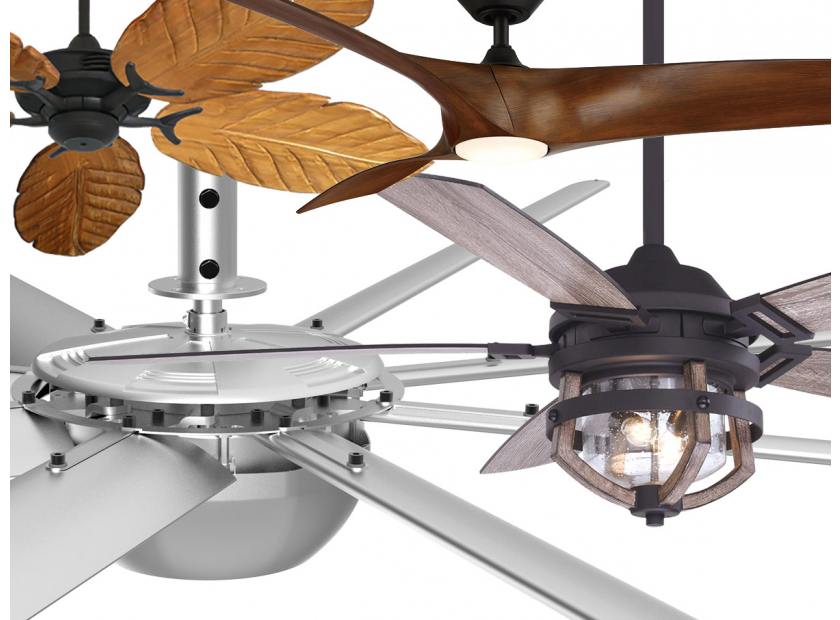The ceiling fan industry is expected to increase by almost 9 percent before the end of 2026.
This industry has grown over the years not just in monetary value, but in design as well. No matter what you're looking for, you're sure to be able to find something that fits your space perfectly.
You may not be aware of just how many options there are, but this comprehensive guide is sure to let you in all the not-so-secret ceiling fan types for your home.
1. DC Motors
DC stands for direct current. The other type of motor common to ceiling fans is an AC, or alternating current, motor.
When compared with AC motors, a DC motor uses 70 percent less energy to operate. It also runs with little to no noise. Some are even great for outdoor use.
They typically come with 6 speeds and the fan direction can even be reversed if you wish.
They're typically hard to find at large hardware stores, but we have an abundance of ceiling fans with DC motors available for you.
2. Smart Ceiling Fans
Smart ceiling fans come categorized by three things:
- It can start and stop either on its own or with little effort on your part
- Some can be set up on a schedule
- Others are connected to your smart thermostat or your smartphone
Further, smart ceiling fans can come equipped with sensors that automatically adjust its light brightness depending on the time of day.
Because these ceiling fans come equipped with the ability to change on their own, or they can be set up in advance, that means they're energy-efficient. They come on the pricy side, but it's an investment that's able to save you money in the long run.
3. Outdoor Ceiling Fans
Outdoor ceiling fans come in two classifications:
- Wet-rated
- Damp-rated
Wet-rated ceiling fans are built to handle outdoor weather of any kind. They come equipped with all-weather blades made for snow, rain, and ice. You can even spray them with a hose.
Damp-rated ceiling fans are built for the outdoors as well, but they're made to handle moisture in damp areas (like a covered back porch area). They're not made to withstand direct rainfall, snow, or ice.
4. Low Profile
Low profile ceiling fans are designed to sit closer to the ceiling than other fans.
Low profile ceiling fans are ideal for lower ceiling heights (especially anything below 8-feet).
Though low-profile ceiling fans do come in different blade sizes, most are not equipped with a down rod to adjust the height.
5. Small
While small ceiling fans may seem like they fit with the low-profile type of ceiling fan, this isn't accurate.
Small ceiling fans are designed for smaller spaces, but they're not necessarily made to sit closer to the ceiling. They can still come equipped with a down rod for small areas with higher ceilings.
Their blades can range anywhere from 16 to 42-inches.
These ceiling fans are best for bedrooms or smaller living room areas.
6. Large
Typically, large ceiling fans are 72-inches or more. They're designed for larger spaces and come with more power.
While some blades span up to 24-feet, they need special power to operate. This also means special installation, and possibly hiring someone to hang the fan for you.
For larger fans, you should check the CFM rating. You shouldn't just buy something that you want to cram into your space and call it a day.
Be sure to measure the room you're placing the fan, and calculate from there.
7. Double
Double ceiling fans are equipped with two motors. The two motors are connected by a sturdy horizontal bar, and some are even adjustable for when you want to target different areas of your space.
They can be used indoors and outdoors, and come in a variety of shapes, styles, and sizes.
8. Industrial
Industrial fans are available for use in commercial and residential situations.
Often, they're larger in size, meaning they're meant for larger spaces. They're meant to provide a lot of power while remaining sleek and minimal.
If you're looking to purchase a large industrial ceiling fan for your space, you'll need to measure the height of the down rod you'll need.
If your space is not large, there's no need to worry. While industrial fans are a type of ceiling fan, they're also a style. That's what makes them unique.
You can find larger industrial ceiling fans, which might be the first thing you think of when you hear of industrial ceiling fans. But you can also find smaller ones that only look industrial.
9. With and Without Lights
Some ceiling fans come with lights, and some come without.
If you find a ceiling fan you love that doesn't come equipped with a light, you can also purchase separate lighting for it.
Find Your Favorite Ceiling Fan Types, Then Choose Style
Though this guide covered all the ceiling fan types, the style you choose is completely up to you.
That's where we can help. Instead of visiting big hardware stores, let Fan Palm Store personally help you choose the best ceiling fan for your space.
If you'd like to browse our large selection, visit our website. There, you can find and order exactly what you need without leaving your home.
If you have any other questions or want to read more about ceiling fans before deciding on one, contact us, or visit our blog today.



